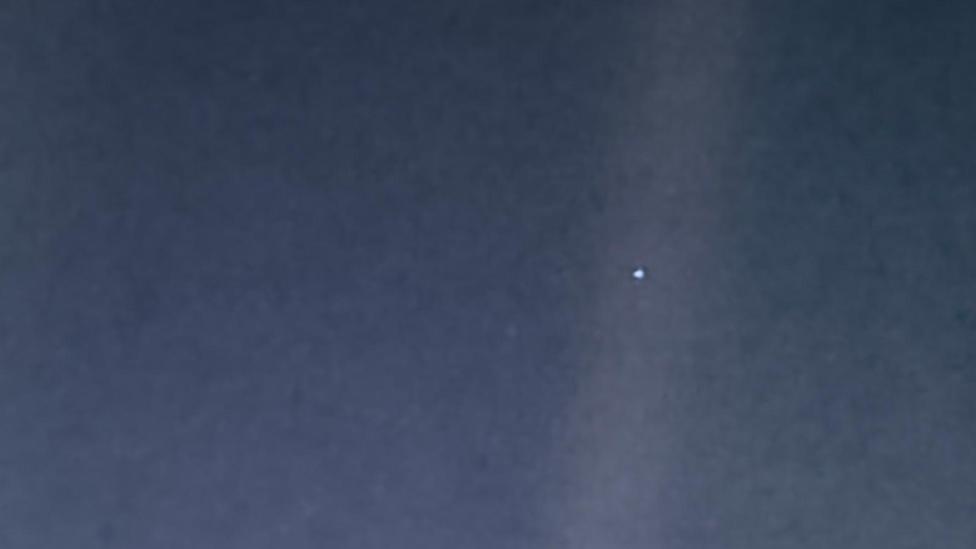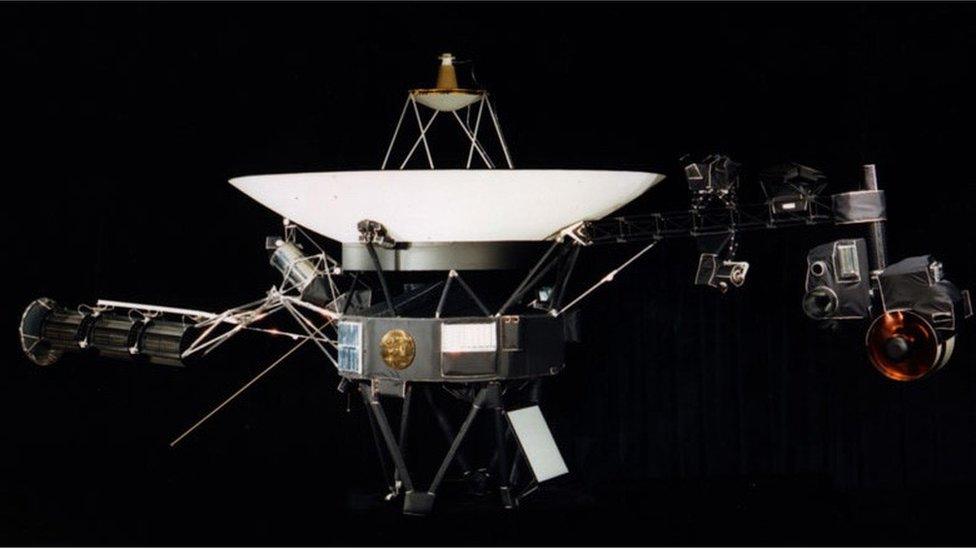Voyager 2: Nasa picks up 'heartbeat' signal after sending wrong command
- Published

Voyager 2 has stopped receiving commands or sending data back to Earth
Nasa has picked up a "heartbeat" signal from its Voyager 2 probe after it lost contact with it billions of miles away from Earth, the space agency said.
Last month, the spacecraft - exploring the universe since 1977 - tilted its antenna to point two degrees away from Earth after a wrong command was sent.
As a result, the probe stopped receiving commands or sending data.
But on Tuesday, Nasa said a signal from Voyager 2 was picked up during a regular scan of the sky.
Where is Voyager 2 now?
Voyager 2 is more than 12.3 billion miles (19.9 billion km) from Earth, where it is hurtling at an estimated 34,390mph (55,346km/h) through interstellar space - the space between the stars.
Since 21 July, the probe has been unable to receive commands or send back data to Nasa's Deep Space Network - an array of giant radio antennas across the world - and the spacecraft is not receiving commands from ground controllers.
However, there is hope for the probe, with contact - albeit limited - now re-established.
Given that the space-craft is almost 20 billion kilometres (more than 12 billion miles) away, that signal will have taken around 18 hours to reach earth.
Nasa said the news confirms Voyager 2 is still broadcasting and is in "good health."
Earlier on Monday, the space agency said its huge dish in Australia's capital, Canberra, was trying to detect any stray signals from Voyager 2.
The antenna has also been bombarding Voyager 2's area with the correct command, in the hope of making contact with the probe, said Nasa's Jet Propulsion Laboratory, which manages the Voyager missions.
While fuller communication is not yet established, Voyager 2 is programmed to reset its orientation multiple times each year to keep its antenna pointing at Earth. The next reset is due on 15 October, which Nasa says "should enable communication to resume".
In the meantime, Nasa expects the spacecraft laden with science instruments to remain on its planned trajectory through the universe.
The probe has been floating in space since 1977 when it was launched to study the outer solar system.
Voyager 2 and its twin Voyager 1 are the only spacecraft ever to operate outside the heliosphere, the protective bubble of particles and magnetic fields generated by the Sun. They reached interstellar space in 2018 and 2012 respectively.
The probes were designed to take advantage of a rare alignment of outer planets, which occurs about every 176 years, to explore Jupiter and Saturn.
Voyager 2 is the only spacecraft ever to fly by Neptune and Uranus, while Voyager 1 is now nearly 15 billion miles away from Earth, making it humanity's most distant spacecraft.
"You might have heard... Voyager 2 is taking a break from sending data until October. In the meantime, I'm out here, almost 15 billion miles (24 billion km) from Earth and doing fine! - V1", wrote Nasa on X, formerly known as Twitter, last week.
Each spacecraft carries a Golden Record with Earth's sounds, pictures, and messages intended to communicate a story of our world to extra-terrestrials.

Voyager 2 launched 16 days before its twin, Voyager 1
Related topics
- Published13 February 2020

- Published4 November 2019

- Published10 December 2018

- Published26 February 2013
